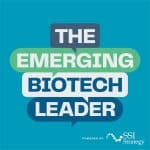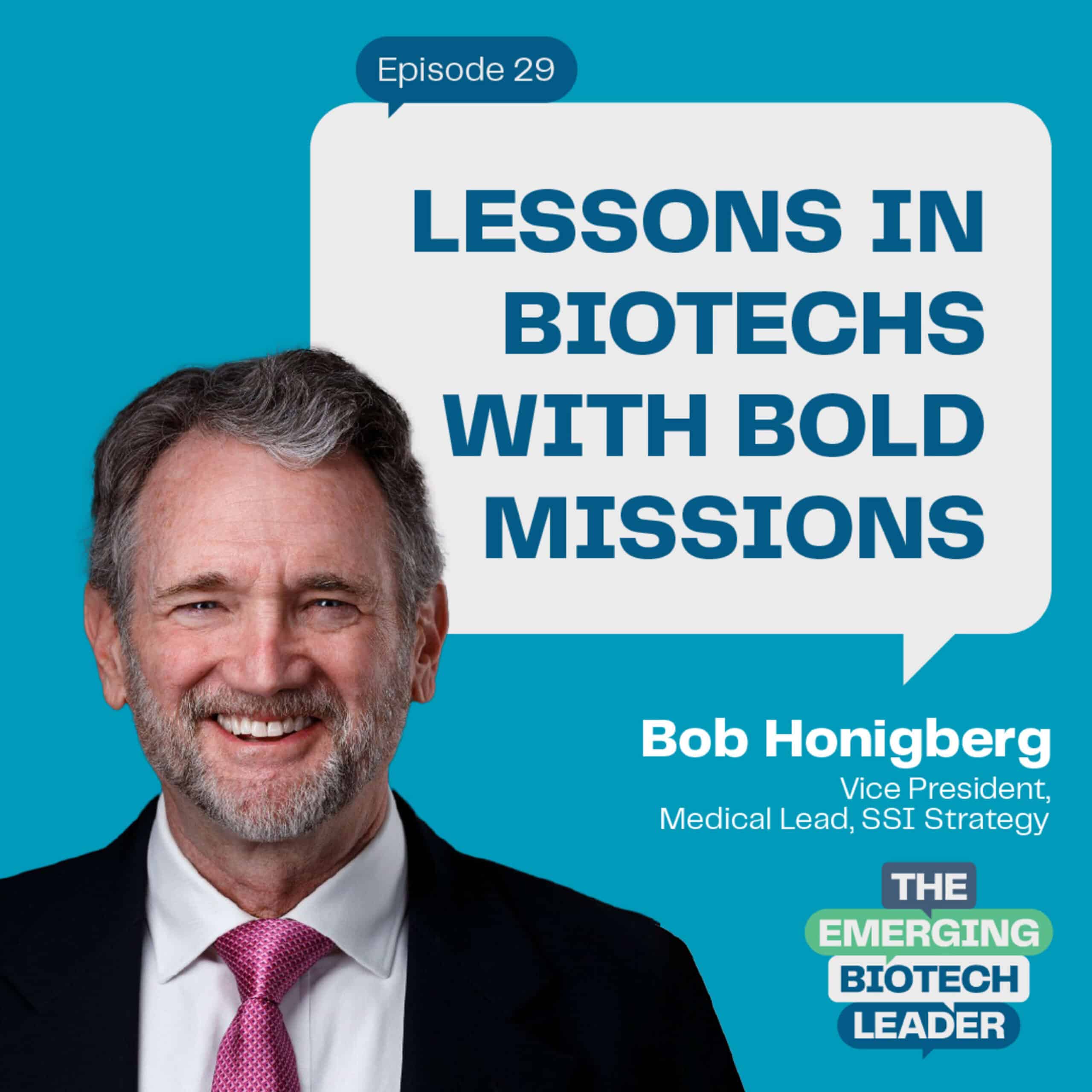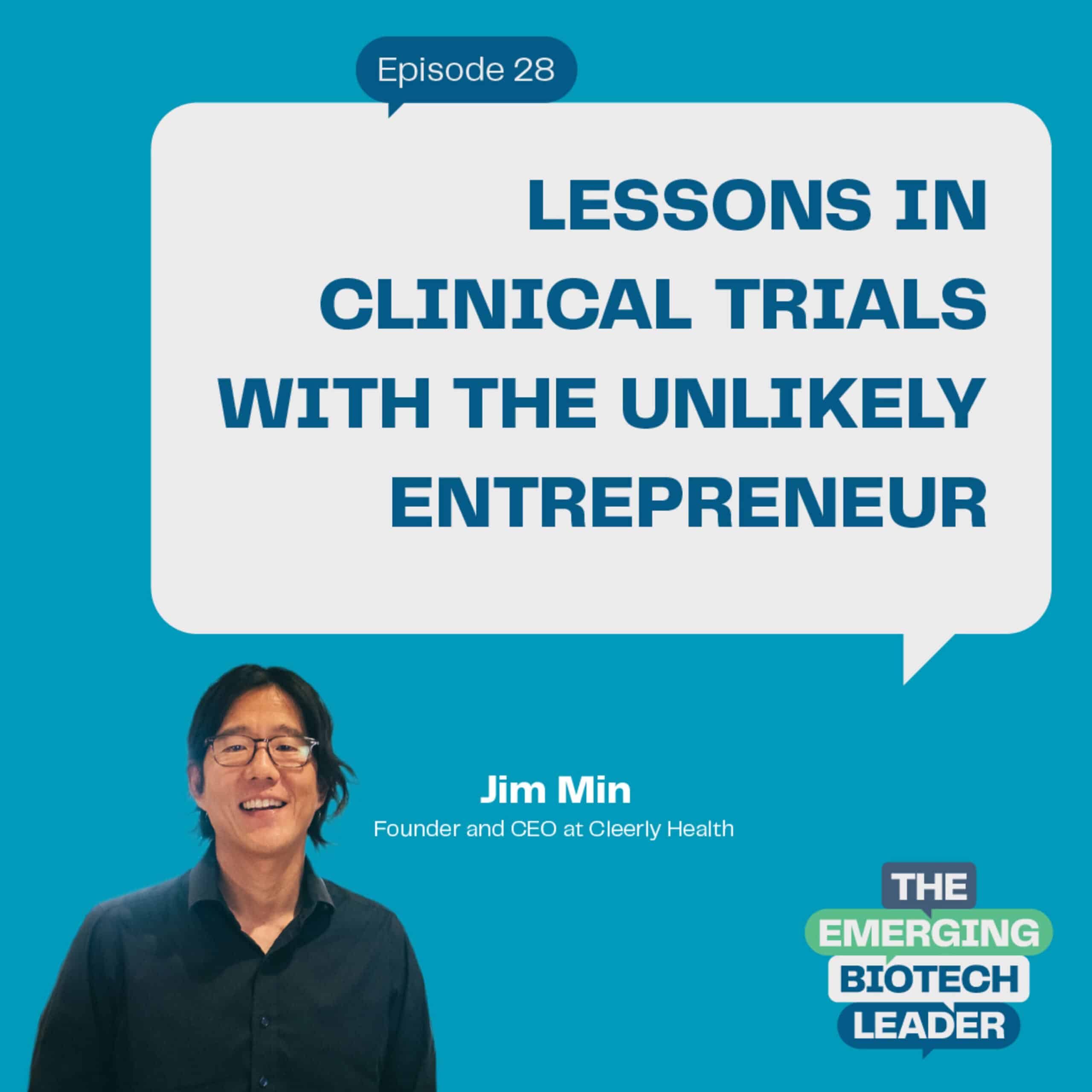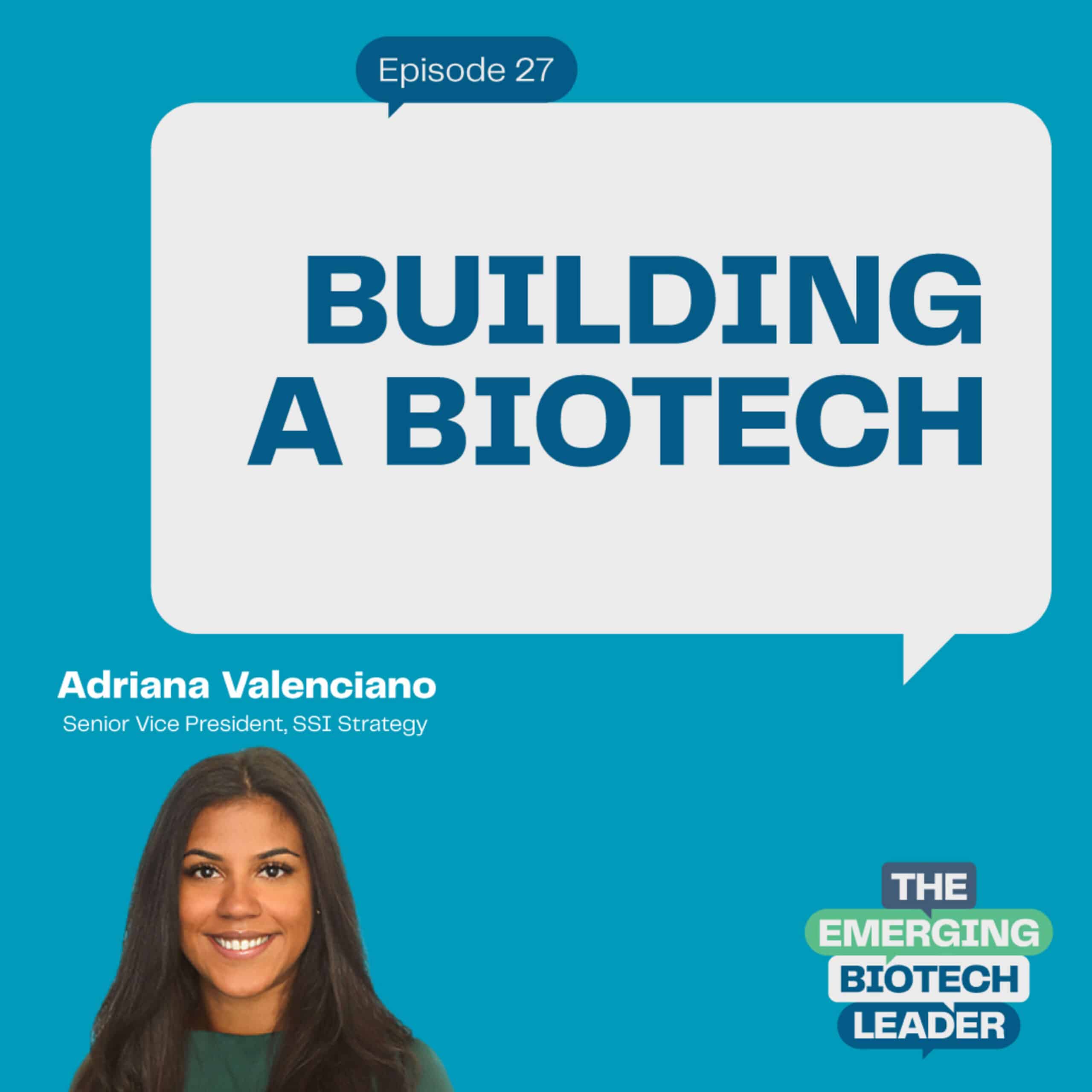
“The reality is that the earlier one thinks about and invests in a safety process and a safety system, the more dividends that early thinking pays downstream.” Dr. Greg Fiore
Harvard-Trained Physician. McKinsey Consultant. Startup Advisor. These are just a few of the titles that describe our next guest, Dr. Greg Fiore.
As one might imagine, with these titles comes a unique lens and broad array of experience within the world of pharmacovigilance (PV).
Expanding upon the topic of PV and safety from Episode 24, “Cultivating A Culture of Safety” with Dr. Jason Campagna, Greg, the CEO of Exacis Biotherapeutics, joins Amit and Ramin to carry the conversation forward–providing best practices and wisdom from his 25+ year career.
During this interview, all three cover topics that emerging biotech founders should have top of mind when it comes to pharmacovigilance including:
- When to think about safety.
- What role AI might play in safety within the next few years and,
- The skill sets and strengths that a safety/PV career cultivates and relies on.
As a fun fact, did you know? The etymological roots for the word “pharmacovigilance” are: Pharmakon (Greek) = medicinal substance, and Vigilia (Latin) = to keep watch. (Source: Fornasier G, Francescon S, Leone R, Baldo P. An historical overview over Pharmacovigilance. Int J Clin Pharm. 2018 Aug;40(4):744-747. doi: 10.1007/s11096-018-0657-1. Epub 2018 Jun 15. PMID: 29948743; PMCID: PMC6132952.)
Back when Greg and Ramin first started their careers, pharmacovigilance had very little to no budget, and Greg even joked that he had to look the word up in the
dictionary. Times have changed. As of today, LinkedIn shows 3,000+ pharmacovigilance roles available in the United States alone.
What you’ll hear during this conversation as well is that a key piece to a PV career entails building and maintaining subject matter expertise as it pertains to regulations around safety especially mandated by health authorities such as the FDA (Food and Drug Administration) in the United States or the EMA (European Medicines Agency) in Europe.
Before you settle in to listen to the full episode, take a quick glimpse at these overarching highlights.
On His Start In PV/Safety
If Greg’s various titles piqued your interest, here’s how a few of them came to be plus a backstory on how he made his way to safety.
“I was training in internal medicine and went into a pulmonary fellowship up in Boston at Brigham and Women’s Hospital. And at the time, many of my colleagues had transitioned into non-traditional medical careers. This is going back 25 years and that was much less commonplace than it is today. So I started to explore what else was out there, you know, where else I could learn new skills. And I stumbled across McKinsey and Company and subsequently joined the company a couple of years into my fellowship in pulmonary. I never even completed the pulmonary fellowship. While I was at McKinsey, I learned quite a bit. As I started to look into my next step, the pharmaceutical industry made a lot of sense to me. And I ended up having a conversation–as many of us do–with a recruiter who really caught my attention around a very unique role at a large pharmaceutical company who had just acquired another pharmaceutical company.
And they had budgets in many of the different functions to complete the integration activities, but the pharmacovigilance department did not have such a budget at that time. I had to look up the word pharmacovigilance because I really didn’t know what it was actually back then. The job really was a hybrid of a medical role, pharmacovigilance physician, but also really taking the lead on the integration activities so it sounded great. It was in a wonderful city. And I made the move into that company. Very shortly after I joined, the integration project got put on hold for a bit. And immediately, I had to dive very deeply into the pharmacovigilance activities and learn about the single case reports and periodic safety update reports. So that was my introduction.”
On The Best Time To Start Safety
Much like Jason advised in Episode 24, Greg wholeheartedly agrees that the earlier a biotech can think about safety, the better. But the key question here is why?
“I can see how some of the thinking around safety and pharmacovigilance and more around the operational side of that can sort of get swept up in the onboarding of CROs and thinking about clinical sites, enrollment, and some of the activities that would seem to be, you know, much more on the radar screen of the investors, let’s say in the outside world. The reality though, is that the earlier one thinks about and invests in a safety process and a safety system, the more dividends that early thinking pays downstream.”
One specific example Greg shares on those dividends is using a centralized, single integrated database.
“Having a single integrated database with a single set of processes allows for the coding and codification of the safety information to be done in a very uniform way across the entire product life cycle so that when we’re performing analysis when we
go back to search for certain things, we don’t have to remember how we used to code things, how information was handled, etc., in a legacy clinical trial.”
Greg goes on to share that if you fail to start your safety planning early, that doesn’t mean there aren’t ‘tried and true ways’ to jump in really at any stage in the process–however, the earlier, the better.
Amit wanted to know more from Greg on how safety systems evolve. Is PV always outsourced? Should it be internal? External? Are there other ways to craft a model? As a follow-up to this, Ramin wanted to also hear more about hiring early.
“Really what we see, I would say, uniformly across the industry is that there’s some capabilities in house and some capabilities that are handled by third party providers. And the third-party providers really span a spectrum of contribution.” Greg dives into much deeper detail on this around 8:46 of the interview. As a quick Cliffsnote: more inside, less outside, or more outside, less inside depends on a lot of factors.
“It’s a little bit hard to say, ’there’s a cookie cutter model’, but it’s quite straightforward when we get in there, and we interview leadership and we understand what their investors are thinking.”
On The Role of AI in PV
The inspiration for the next point of discussion came from Amit and what he’s been seeing at industry events.
“I was at a couple of drug safety conferences earlier this year, and a very hot topic right now is AI and Chat-GPT and how we’re going to use artificial intelligence in the PV space specifically on looking at and managing the safety profile of an asset. We’d love to hear your thoughts around that to see and really understand where you think this could potentially go.”
Here’s what Greg shared. AI has been on the radar of safety leaders and experts for some time now. That said, the prior approaches didn’t really get a lot of traction for a variety of different reasons. “I think they are probably rooted in the deeply regulated nature of safety and the conservative nature of safety.”
Ramin and Greg enjoyed some provoking back and forth on the pros and cons of AI for safety. After all, current safety processes do require human review and may be susceptible to human error which is where the augmentation of AI may help. But Ramin did caution that it may be years before the complexity and nuance of AI for safety can be really harnessed.
For more on leveraging technology to tackle problems in biotech, check out Episode 17 of the Emerging Biotech Leader.
On The Skills That Are Required for a Career In PV
To pass the torch to the next generation of PV leaders, Ramin asked for Greg’s thoughts on the profile type of a candidate for pharmacovigilance and his advice for somebody who is interested.
His answer was reassuring. “In safety, I think there’s something for everyone.”
- There’s an opportunity for someone who has an affinity for regulation to really become a subject matter expert in the regulations around safety.
- There are deeply analytic activities including the summarization of data.
- Also, safety is perfect for people who want to be more involved on the strategic side.
Adding further context, Greg shared, “The regulatory side has ramped up dramatically over the past 15 or 20 years with regulations both in the U.S. and in Europe. And then more recently, I would say the opportunity to really to have
influence on the company, you know, the strategy at a corporate level has found its way on the radar screen of safety. And I think safety experts really do have a seat at the table now with the most senior leaders and companies when the most important decisions are being made.”
Greg also went on to share how safety provides such broad access to the activities going on in pre-marketing and post-marketing that a strong base in safety allows someone to springboard wherever they develop interests in the industry.
His career is certainly living proof of this.
If you aspire to have more versatility and impact across biotech, safety is another career pathway to consider.
And on that note, we hope you enjoyed yet another informative Episode of the Emerging Biotech Leader. Please be sure to leave us a review or rate us on Apple or Spotify.


